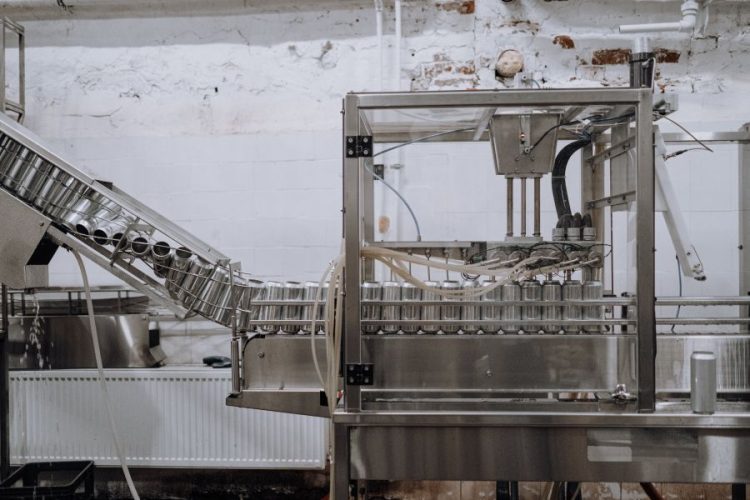Manufacturing Mastery: The Ultimate Guide to Automating Production

Categories :
Welcome to the world of manufacturing mastery! For centuries, humans have been perfecting the art of creating goods through mass production. From the assembly line to modern-day automation, manufacturing has come a long way and continues to evolve at a rapid pace. In today's global economy, efficiency and productivity are key factors that determine a company's success in the market. That is why mastering the art of manufacturing has become more important than ever before.
Whether you are an established manufacturer looking for ways to stay competitive or someone interested in learning about this crucial industry, this guide will take you on a journey through the history of manufacturing and delve deep into modern practices and techniques that can help you achieve true production mastery. So buckle up and get ready to explore everything from lean principles to innovative automation technology – all in pursuit of becoming a master manufacturer.
Understanding the basics of automation - types of machines and processes
Automation has become increasingly prevalent in today's fast-paced society. Businesses are turning towards machines to complete repetitive tasks quickly and efficiently, leaving more time for creative projects. There are various types of automation systems, including fixed automation, programmable automation, and flexible automation. Fixed automation is designed for a single specific process and is often used in assembly lines.
Programmable automation allows machines to perform different tasks based on programmed instructions, while flexible automation adjusts to different product variations. Processes such as material handling, welding, and painting are commonly automated. Understanding the different types of machines and processes involved in automation is crucial for businesses seeking to streamline their workflow and maximize productivity.
Identifying key areas in your production process that can benefit from automation
As businesses seek efficiency and growth in the digital world, automation has become an increasingly valuable tool in the production process. To utilize automation effectively, it's essential to identify the key areas of your process that could benefit from automation.
These may include repetitive tasks, error-prone processes, or labor-intensive operations. Moreover, as evident at spiroflowautomation.com/, there are online resources where you can learn more about how you can find professional help for the automation of your production processes. That way, you can leverage the expertise and experience of automation specialists to identify potential areas for improvement and effectively implement automation solutions that suit your specific needs.
Tips for selecting the right automation equipment for your business
Selecting the right automation equipment for your business can be a challenging task. With so many options available in the market, it's important to do your research and find the one that suits your needs.
It's important to consider various factors such as the size and type of your business, your budget, the complexity of your manufacturing process, and the level of automation you require. Investing in the right equipment can help you improve efficiency, pursue OEE improvement, boost productivity and reduce labor costs in the long run. So, take the time to evaluate your options and choose the best automation equipment that will provide you with the best bang for your buck!
Implementing automation in small steps vs full-scale transformation
In today's fast-paced world, businesses are constantly looking for ways to increase production while minimizing costs. One way to achieve this goal is through automation. But should businesses implement automation in small steps, or go for full-scale transformation? While there are pros and cons to both approaches, small steps can be a more practical way to introduce automation into production processes.
Instead of completely transforming the entire system, businesses can gradually identify which tasks can be automated and implement solutions that are specific to each task. This method allows for adjustments along the way, ensuring that automation is integrated successfully and efficiently into the production process.
The role of data analysis in optimizing automation and increasing efficiency
With the advent of automation, there is a growing need to streamline manufacturing processes and optimize performance. Data analysis plays a crucial role in achieving these objectives. It helps organizations identify bottlenecks in the production process, determine where inefficiencies are occurring, and locate opportunities for improvement.
Leveraging the power of data can help businesses make informed decisions that lead to greater efficiency, lower costs, and increased profits. Whether it's reducing defects, improving product quality, or enhancing supply chain efficiency, data analysis has become a key component in modern manufacturing.
Common challenges and how to overcome them while automating production
As more and more industries embrace automation in production, common challenges are bound to crop up. However, with the right knowledge and approach, these challenges can be surmounted. One major challenge is knowing which parts of the production process to automate. This requires a thorough understanding of the production process, which can be achieved by consulting with experts and conducting a detailed analysis.
Another challenge is integrating the automated production system with existing systems and equipment. This requires careful planning and collaboration with existing IT and engineering teams. And, training employees to operate and maintain the automated system is crucial to ensuring its success. It's important to provide comprehensive training to all staff members to ensure that they are fully equipped to operate the production line.









